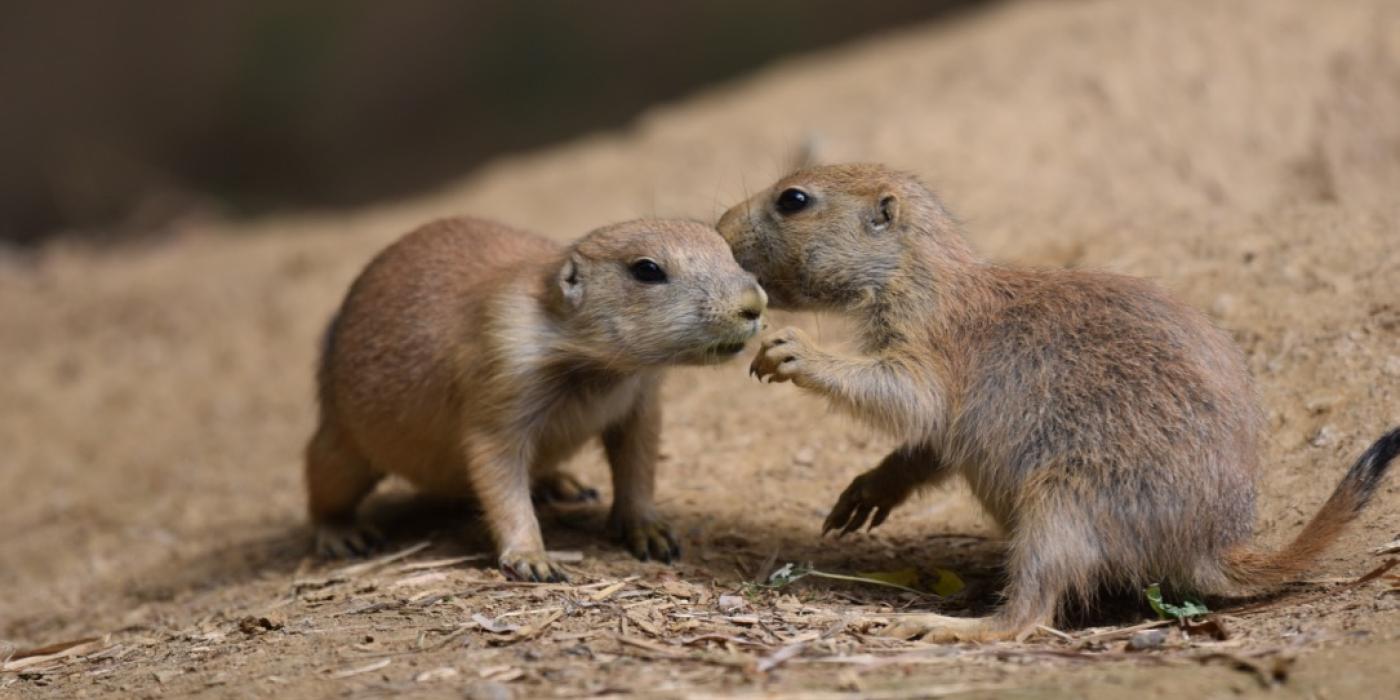Once plentiful across the North American central plains, prairie dogs are similar to people in that they gather together in families, communities, and towns. Whereas people live mostly above ground, prairie dogs live in towns (colonies) made from tunneling underground. Colonies can be large; the biggest colony of prairie dogs was estimated to be an area covering 25,000 square miles. From Canada to Mexico, prairie dogs numbered an estimated 5 million in 1800, when The Lewis and Clark Expedition encountered what they called “barking squirrels.”
Today prairie dogs live in an area that represents 5% of the once massive habitat they used to call home. Settlers eventually parceled land into farms and ranches where prairie dogs were viewed as rats that needed to be exterminated. Among a slew of other annoyances, it was rumored that horses and other farm animals easily broke legs and ankles when they stepped into prairie dog burrows. Thanks to the accidental introduction of rats into their habitat, prairie dogs can carry the animal equivalent of the bubonic plague.
Fun Facts:
Prairie dogs are social animals that follow an ordered hierarchy among their tight-knit families, and they are loads of fun to watch. These fun facts will help the casual watcher enjoy the prairie dog family life spectacle.
- Prairie dogs are members of the Rodentia order of animals. This order includes squirrels, rats, chipmunks, marmots, and many others.
- There are five prairie dog species: Gunnison’s, White-tailed, Black-tailed, Mexican, and Utah prairie dogs.
- Prairie dogs are keystone animals, meaning the environment and predators benefit from them. They help the environment by eating insects and keeping grass and weeds under control. A wide range of predators eats prairie dogs. Without them, they would vanish.
- Prairie dogs use a sophisticated form of communication that sounds like a barking dog. Indeed, as a predator species, they need to warn family members about pending danger.







What do you think?
Show comments / Leave a comment